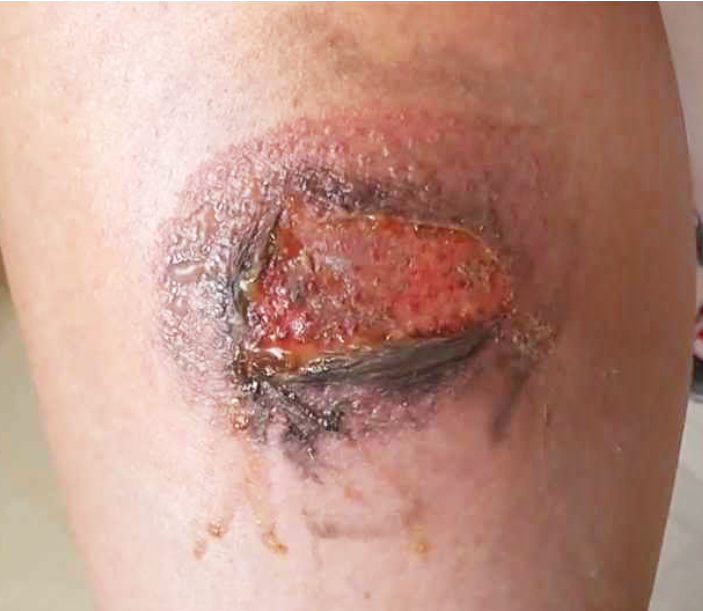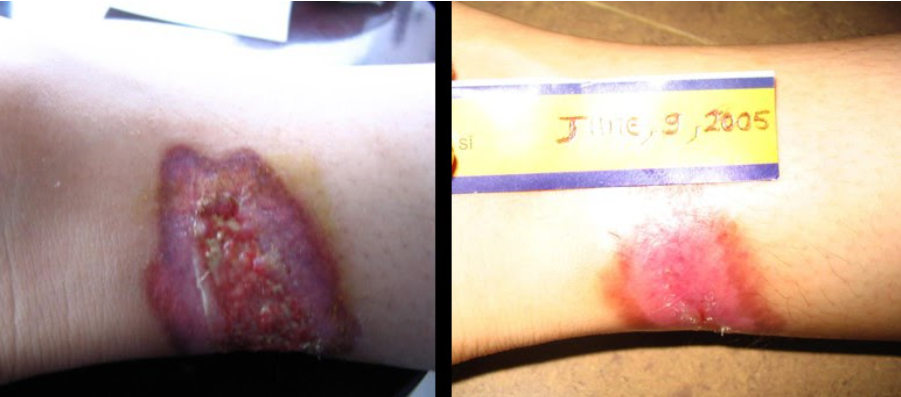Instructions for taking care of sores caused by motorbike burns
Vietnam has the highest percentage of motorbike users in the world. Therefore, motorbike burns are a common accident, especially for women who often wear short skirts or children who accidentally bump into a hot exhaust pipe. This article helps you take care of the sores caused by an exhaust pipe burn, limiting the serious damage caused by the burn.

Burns caused by motorbike exhaust pipe
1. Determine the extent of the burn
Burns are categorized by their severity:
- A first-degree burn is considered the least severe because it only affects the outer layer of skin. It usually only causes mild pain, redness, and swelling.
- Second-degree burns affect deeper layers of the skin and cause blisters and white, wet, and shiny skin.
- Third-degree burns involve damage to all layers of the skin
- Fourth-degree burns may involve the joints and bones. Third- and fourth-degree burns are considered medical emergencies and should only be treated in a hospital.
2. What should I do when I get burned by exhaust pipe?
In the case of hot exhaust pipe burn, the following first aid steps should be taken:
- Remove the cause of the burn as soon as possible, remove clothing from the burn area because clothing has a heat-retaining effect, and keep clothing tight in place.
- Cool the burned skin: soak or wash the burned area with cool, clean water. The best time to soak is within 30 minutes of the burn. Time to soak the burn lasts 15 - 30 minutes (usually until the pain is gone).
- After cleaning the brand with water, can use physiological saline (NaCL 0.9%) or use Providine 10% for duplication. Absolutely do not abrade the brand with hydrogen peroxide, red medicine, anti-medical because these are substances that cause tissue death.
- After irrigation, apply Multidex®.
- For shallow wound – ¼ thick over entire wound site
- For deep wound – fill wound site to surface taking care to fill all undermined areas
- Cover with a non-adherent, non-occlusive dressing such as Covaderm Plus®, MultiPad™, Sofsorb®, or Polyderm™ Plus. If necessary, tape in place or use roll gauze or Stretch Net™ to secure dressing.
- Dressing change should be once a day on minimally to moderately draining wounds and twice a day on heavily exudating wounds.

Burns caused by motorbike exhaust pipe, after 3.5 weeks of treatment with Multiindex
Usual frequency of dressing change is once a day, depending upon drainage and the type of secondary dressing.